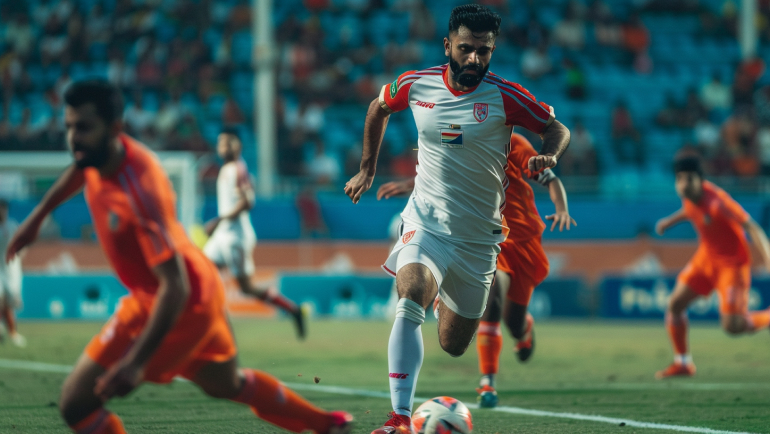**The Indian Football Team Opted Not to Participate in the FIFA World Cup After Qualifying**
I grew up in a family that fought over which player played better at a football match. Derby matches were an annual event that was celebrated in my house.
Needless to say, I don’t know how this sport became a massive part of my life, where staying up late at night to watch a particular football match has become something that comes naturally to me.
Last week, while watching this new movie on Netflix, “Maidaan,” I started researching Syed Abdul Rahim and his contributions to the history of Indian Football. His struggles, his achievements, and the fact that nothing has come easily to him and his beloved game did not fail to strike a chord.
And I realized that is exactly what Indian Football has been— a rollercoaster of highs and lows. Something that has somehow failed to be appreciated globally at present, but once did!
The Entire Timeline of Indian Football in the World Scene

Football is undoubtedly one of the most popular sports in the world. But, what a lot of people are unaware of is that this game has a long and fascinating journey in India.
If there is one thing that the Netflix movie has made people excited about, it is the struggle that the team had faced to reach where it reached. You might be surprised to know that the greatest victory at the Asian Games (1962) almost did not happen.
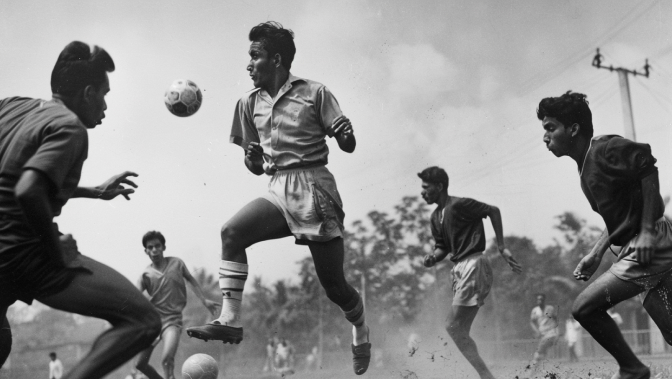
“In the opening preliminary league match the Koreans had beaten India 2-0. The road to the final was not easy. India qualified as the second team in the group by beating Thailand 4-1 and Japan 2-0. In the match against Thailand, stopper-back Jarnail Singh, considered Asia’s best defender in the 1960s, sustained a head injury after colliding with an opponent and received ten stitches on his forehead. India played with ten men as the substitution rule was not yet applicable. India’s most successful coach, Syed Abdul Rahim, made some shrewd changes in the formation. Arun Ghosh played as a stopper, and T. Balaram, one of India’s greatest forwards, was shifted to the midfield. Arun Ghosh clicked as a stopper- back for the rest of the tournament.”
[Excerpts from Barefoot to Boots: The Many Lives of Indian Football]
Popular even in the mid-19th century, when the game was first introduced to the masses by British soldiers of the East India Company, the first-ever match was held in 1892.
Over the years, the game has taken a major turn. But exactly how? And what are the things that you should know about Indian Football?
Sarbadhikari and the Origins of Indian Football
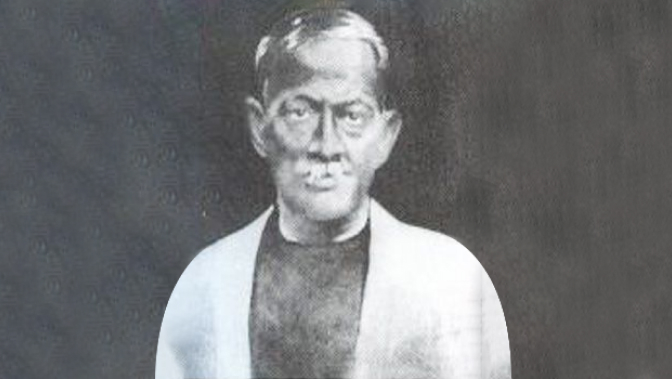
Nagendra Prasad Sarbadhikari is often hailed as the Father of Indian Football for his pivotal role in introducing and popularizing the sport in India.
Born into a prominent family in Calcutta in 1869, Sarbadhikari was first exposed to football by British soldiers. Fascinated by the game, he began playing with his schoolmates at Hare School, using a ball purchased from a local shop.
Because of his contagious passion, Sarbadhikari was able to persuade friends and European educators to sponsor the game.
As a result, the first Indian football clubs and organizations were established, initiating organized football in the nation. His actions made football a game for everyone by challenging racism and casteism, which were prevalent social standards in addition to sports.
When it comes to the establishment of the Indian Football Association, Sarbadhikari was a key figure. The IFA, in 1892, oversaw football in Bengal and subsequently had an impact on the growth of the sport throughout India.
Even now, we can see his influence in the clubs and associations he helped start and the social transformations football elicited by bringing people from all walks of life together on the pitch.
According to several sources, “[He] responsible for setting up several football clubs across Kolkata (erstwhile Calcutta) and Bengal, which gave the game’s popularity a huge lift. Calcutta and Bengal, hence, became the epicentre of football in India.”
Sarbadhikari has made a significant impact on Indian football. He created the de facto body, IFA, which served as the governing body for Indian Football before the AIFF was formed in 1937.
He established the groundwork for a pastime that would rise to prominence in the nation, bridging socioeconomic divides and uniting people. His vision and love for football have had a lasting impact on Indian sports history.
The Formation and Craze of Indian Football Clubs
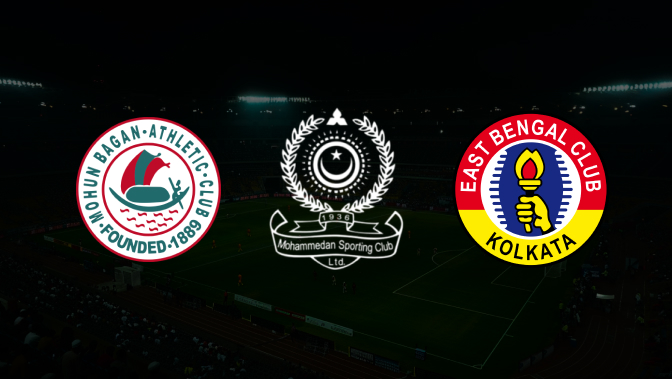
Sarbadhikari’s contributions do not simply stay limited to what I have stated above. It was because of him and the initiatives he had taken that three of the football giants were established.
These were Mohun Bagan (1889), the Mohammedan Sporting (1891), and the East Bengal Club (1920). All three clubs, which still exist today, have led Bengal and India to become the epicenter of football in Asia.
The three Kolkata football teams known as the “Big Three“— East Bengal, Mohammedan Sporting, and Mohun Bagan— have significantly impacted the development of Indian football.
Let me brief you about them one by one!
1. Mohun Bagan
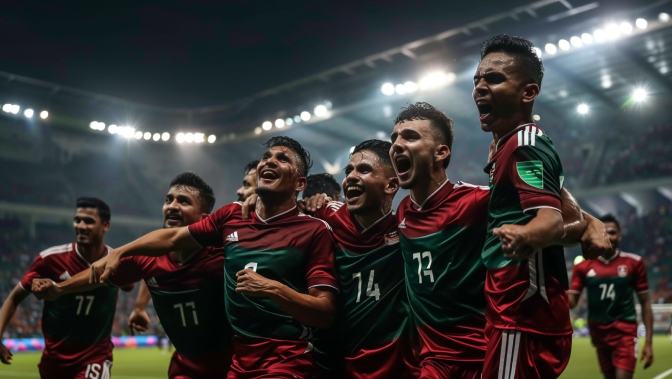
Since its founding in 1889, Mohun Bagan has been a vital part of Indian football and is more than just a football club.
The club’s most famous accomplishment occurred in 1911 when it became the first all-Indian team to defeat a British team by defeating the East Yorkshire Regiment to win the IFA Shield.
This triumph served as a symbol of pride and defiance during India’s independence movement, making it more than just a sporting accomplishment.
Moreover, this win undoubtedly resulted in an unexpected surge of interest across the country for football.
The team’s on-field accomplishments have not stopped, and its most recent ISL Shield victory in front of a record-breaking crowd at Salt Lake Stadium is evidence of its lasting popularity and legacy.
2. Mohammedan Sporting
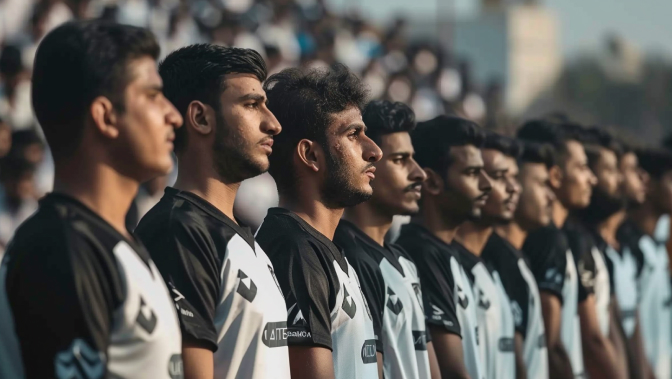
Mohammedan Sporting is one of the oldest football clubs in India, having been founded in 1891. The team’s illustrious past is highlighted by its reign in the Calcutta Football League in the 1930s.
In 1934, Mohammedan Sporting became the first team in the Indian subcontinent to win the league, a feat they repeated five times.
As a result of their recent I-League triumph and subsequent promotion to the ISL, the club has experienced a rebirth that reflects both its historical significance and the fervor that its supporters inspire.
3. East Bengal
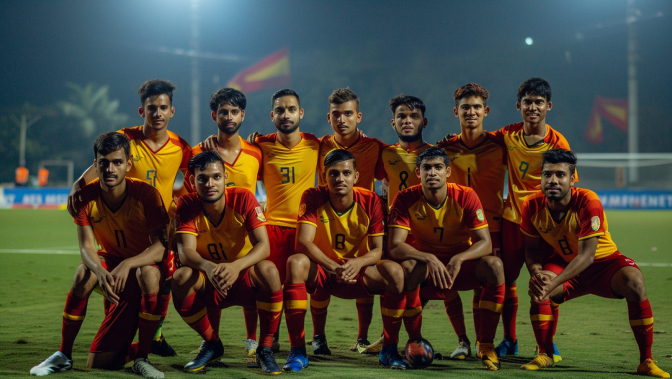
Mohun Bagan and East Bengal, two titans of Indian football, have a bitter rivalry dating back over a century.
The cultural and social gap between the native inhabitants of West Bengal and the immigrants from East Bengal (now Bangladesh) is symbolized by this rivalry, which goes beyond merely football.
After a 12-year trophy drought, East Bengal’s recent victory in the Kalinga Super Cup demonstrates the club’s tenacity and the passion it inspires in its supporters.
—
Football teams in India have become popular due to their legendary rivalries, notable triumphs, and cultural relevance.
They have played a significant role in bringing large crowds to the game, popularizing it, and motivating future generations of football players.
Since these clubs have had a major impact on the expansion and advancement of Indian football, their success is a source of pride not only for Kolkata and West Bengal but for the entire country.
They have an effect off the field as well. These groups have fostered a sense of place, social cohesiveness, and local pride.
They have allowed people from different backgrounds to come together, break down social boundaries, and showcase their skills.
Because of the fervor with which these teams and the game of football are associated, matchdays in Kolkata are like celebrations, replete with color, emotion, and a second-to-none atmosphere.
1900 – 1947: The Pre-Independence Era of Indian Football
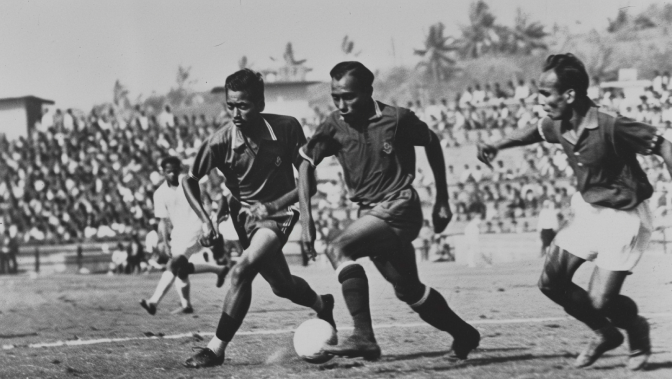
It’s interesting to note that football, during the height of India’s freedom movement from 1900 to 1947, became a useful instrument of resistance.
Remarkably, in the early 1900s, Passive Resisters Soccer Club was the name given to three football teams founded by Mahatma Gandhi, who is widely regarded as the mastermind behind Indian independence.
These clubs were located in Durban, Pretoria, and Johannesburg. Gandhi used matches as a forum to teach the people the value of nonviolent resistance and raise awareness of the drawbacks of racial segregation.
Gandhi kept his connection to football after returning to India in 1914 to actively lead the country’s independence campaign. From 1921 to 1922, he helped arrange for the first football team from South Africa to visit India.
In the meantime, Mohun Bagan’s 1911 IFA Shield victory over the East Yorkshire Regiment in the championship match marked a turning point.
The Kolkata team’s triumph not only made them the first all-Indian team to win the coveted cup, but it also served as a major impetus for the Indian independence movement.
Mohammedan Sporting lifted the legendary Durand Cup trophy in 1940 when they defeated Warwickshire Regiment 2-1 in the championship match. The British Teams had this cup for nearly fifty years, and the win proved to be a turning point for the Indian Football team.
The Indian football team made its first-ever official overseas tour to Sri Lanka (then known as Ceylon) with a team that included Indian and British players.
During the tour, the team was headed by the legendary football player Gostha Pal, who is recognized as the first captain of the Indian football team. The AIFF was established in 1937 to assume control of Indian football.
For its first voyage outside of Asia, the Indian national football team traveled to Australia the next year for five exhibition games against local clubs and a number of friendly matches.
In the fourth friendly match between Australia and India on September 24, 1938, during the same tour, R Lumsden of India scored three goals in a 5-4 defeat in Sydney. It was the first-ever hat-trick by an Indian football player in an international competition.
The Golden Era and Missed Opportunities
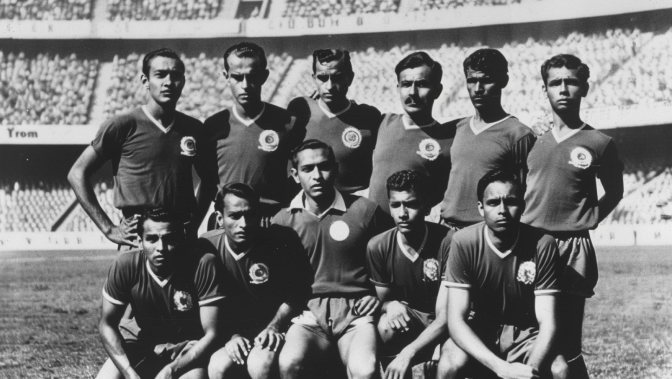
Interestingly, the Indian football team’s first official mission after gaining independence in 1947 was to travel to London for the 1948 Summer Olympics.
On July 31, 1948, in front of 17,000 spectators at East London’s Cricklefield Stadium, the charismatic Talimeren Ao-led Indian football team, coached by Balaidas Chatterjee, took the field against European powerhouses France, representing the Indian tricolor for the first time in the international arena.
Despite being the underdog, India lost its opening football game at the Olympics 2-1, with Sarangapani Raman scoring the nation’s first-ever goal on international soil.
However, the team, featuring Sailen Manna, garnered media attention for exerting pressure on Les Bleus until the end. During the game, eight Indian players were barefoot.
India would go on to compete on the trot in the following three Olympics: Helsinki in 1952, Melbourne in 1956, and Rome in 1960.
The Indian football team, led by the renowned Syed Abdul Rahim, created history in Melbourne in 1956 when they defeated the host Australia in the quarterfinals to advance to the Olympic football semifinals, making them the first Asian team to do so.
He is also among the longest serving coaches for the Indian Football Team.
| INDIA’S SQUAD AT THE 1962 ASIAN GAMES, JAKARTA | |
| Goalkeepers | Peter Thangaraj and Prodyut Burman (West Bengal) |
| Defenders | O. Chandrasekhar (Bombay), Jarnail Singh and Arun Ghosh (both West Bengal) and Trilok Singh (Services) |
| Midfielders | F.A. Franco (Bombay), D.M.K. Afzal (Andhra Pradesh), Ram Bahadur and Prasanto Sinha (West Bengal) |
| Forwards | P.K. Banerjee (Railways), Chuni Goswami (Captain), T. Balaram and Arumainayagam (all West Bengal), D.E. Ethiraj (Services) and Yousuf Khan (Andhra Pradesh) |
| Coach | S.A. Rahim |
| Manager | Nurul Amin (Assam) |
| Results | 26 Aug: Lost to South Korea 0-2; 28 Aug: Beat Thailand 4-1 (P.K. Banerjee: 2, Chuni Goswami, Balaram); 29 Aug: Beat Japan 2-0 (P.K. Banerjee, Balaram) |
| Semi-final | 1 Sept: Beat South Vietnam 3-2 (Chuni Goswami: 2, Jarnail Singh) Final: 4 Sept: Beat South Korea 2-1 (P.K. Banerjee, Jarnail Singh) |
But the Samar Banerjee-led team almost missed out on a medal after losses to Yugoslavia in the semifinals and Bulgaria in the bronze medal game.
In actuality, the years 1948 to 1970 are frequently referred to as Indian football’s Golden Era.
During that time, the Indian football team won one bronze (1970) and two gold medals (1951 and 1962) at the Asian Games.
In 1964, India participated in their first AFC Asian Cup and achieved their best-ever finish of second place.
The success was largely attributed to Coach Rahim and a group of gifted players, including PK Banerjee, Chuni Goswami, and Tulsidas Balaram.
Following multiple withdrawals, India also qualified for the 1950 FIFA World Cup in Brazil; however, the AIFF declined to send a side, claiming “disagreements over team selection and insufficient practice time.”
According to several experts, the 1962 team was the best ever squad. Novy Kapadia, in her book Barefoot to Boots: The Many Lives of Indian Football, states:
“Many experts consider the 1962 team, with an average age of twenty- four years, as the greatest-ever Indian football side. Noted coach and former international player Subhash Bhowmick even said that with proper physical conditioning, India’s victorious squad could have played in the World Cup in Chile held the same year. Ironically, the Indian Olympic Association (IOA) did not think the players had a chance of winning a medal even at the Asian Games, and due to a paucity of foreign exchange, the team’s departure was not cleared until the last minute.”
India hasn’t been able to enter the World Cup of football yet.
Domestically, the Red and Golds were voted the finest Indian football club by the English FA annual almanack of 1951–1952, after East Bengal became the first Indian club to win the IFA Shield three times in a row, from 1949 to 1951.
Unfortunate Stagnation of Indian Football
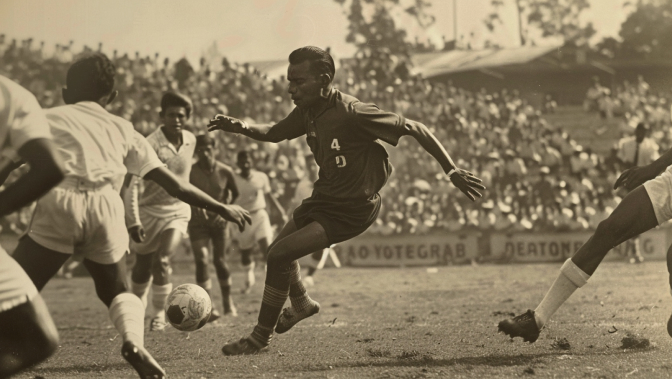
While it is true that the Indian Football Team saw success globally, it kind of failed to hold on to that.
Once considered the Brazil of Asia, India gradually slipped down the global scoreboard.
India and Iran shared first place in the 1974 Asian Youth Championship, held in Bangkok. Prasun Banerjee was the captain.
Additionally, the senior team dominated the SAFF Championship and took home many gold medals from the SAF Games.
But the team could not leave its impact on the world or continental scene. Between 1968 and 2008, the Indian football squad only made it to one AFC Asian Cup, which was hosted in Singapore in 1984.
They were unable to advance past the group round. Since winning bronze in the Asian Games in 1970, India has never advanced past the final eight, even in events that the team used to dominate.
The Nehru Cup, instituted in 1982 to provide India with top-tier national teams from around the globe, too, gradually lost its appeal and was discontinued following the 2012 competition. Club football also painted a comparable picture.
There were few accomplishments on the continent, with the exception of East Bengal’s 2003 ASEAN Championship victory.
Even with players like Bhaichung Bhutia, IM Vijayan, and Jo Paul Ancheri, India could not meet the modern game’s technical and infrastructural demands at the time.
During this period, the AIFF also made a number of domestic structural adjustments. The Federation Cup was established in 1977 to become the country’s main cup tournament for clubs.
The same year, Pele traveled to Kolkata with Cosmos to play an exhibition match against Mohun Bagan.
The National Football League began in 1996 and was India’s first organized league football competition. JCT was the inaugural champion. It was succeeded by the I-League in 2007.
What Could Have Led to the Stagnation of Indian Football?
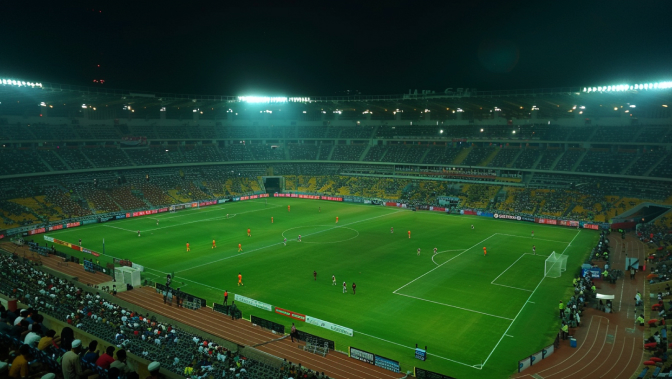
Every sport’s infrastructure is critical to its success. In India, football pitches, training facilities, and stadiums frequently fail to meet the necessary standards.
For example, during the Super Cup in Kerala, the practice field was criticized for poor lighting and a lack of vital amenities such as ambulances. The quality of training and officiating in matches is critical.
India has been criticized for its poor refereeing and requests to adopt Video Assistant Referee (VAR) systems to ensure fair play have been made.
Football competes with cricket for popularity in India. In cricket, the Indian Super League (ISL) is less popular than the Indian Premier League (IPL). Awareness initiatives are required to improve football’s popularity and engagement among the general public.
The All India Football Federation (AIFF) has encountered several issues, including an administrative crisis.
Effective governance is critical to the sport’s growth; without it, advancement is stifled. While there is talent, the pathway for developing young football players requires development.
The academy system is growing, but it needs more funding and better possibilities for young players to prosper. Indian teams require more exposure to top-level international competition. Competing against stronger teams is essential for developing abilities and earning experience.
Additionally, the future of budding and talented players is at stake as major state clubs are now finding flaws in the AIFF’s policies. In a paper titled “The Future of Indian Football,” Kapadia writes:
“At a time when Indian football needs more established clubs to grow and prosper, Salgaocar Football Club, Dempo Sports Club and Sporting Clube de Goa withdrew from the I-League as they believed that the AIFF’s policies were flawed, putting the future of budding players at stake. This is best exemplified by the fate of the talented striker, Milagres Gonsalves. He played in the first ISL final for Kerala Blasters. He is no longer wanted, has given up football in disgust and migrated to England, where he works for a courier company. Similarly, many Goan players are looking for alternative employment.”
Revival Era: Reaching for the Stars?
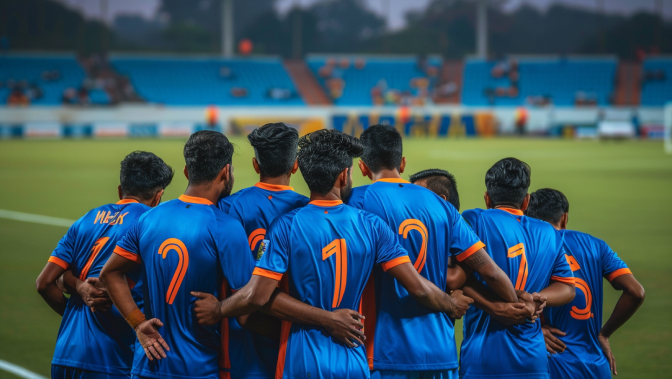
As I have noticed, Indian Football has seen better days over the last decade. They have taken several significant steps that we can say are ways to revive the state of Indian Football to its former glory.
For instance, I remember the scene when the Indian Football Team, led by the young Sunil Chhetri, won the 2008 AFC Challenge Cup. This win qualified India for the 2011 AFC Asian Cup, marking their return to the continental championship after 27 years.
The same year, Goa club Dempo finished in the semi-finals of the 2008 AFC Cup. East Bengal was also an AFC Cup semi-finalist in 2013 before Bengaluru FC finished second in 2016, the greatest finish by an Indian team in the continental tournament to date.
In 2010, the Indian Arrows project started bringing promising young talents to top-tier local club football. If you have heard about players like Pritam Kotal, Gurpreet Singh Sandhu, Jeje Lalpekhlua, and Anwar Ali, you must thank the project!
Additionally, the cash-rich Indian Super League (ISL) began in 2014 and has gradually been introduced into the Indian football calendar, eventually replacing the I-League as the country’s top-tier league tournament in 2022-23.
Apart from this, when it comes to mainstream football, the Super Cup, which began in 2018, succeeded the Federation Cup as India’s premier knockout competition.
To name one, FC Goa, from the ISL, became the first Indian team to compete in the AFC Champions League, the continent’s premier club football competition. The Mumbai City FC also became the first Indian team to win a match!
While it is true that the Indian team did not qualify for the 2015 AFC Asian Cup, on the brighter side, it made a cut for the 2019 and 2023 editions, with Chhetri playing a key role!
India Hosted FIFA Under 17 World Cup
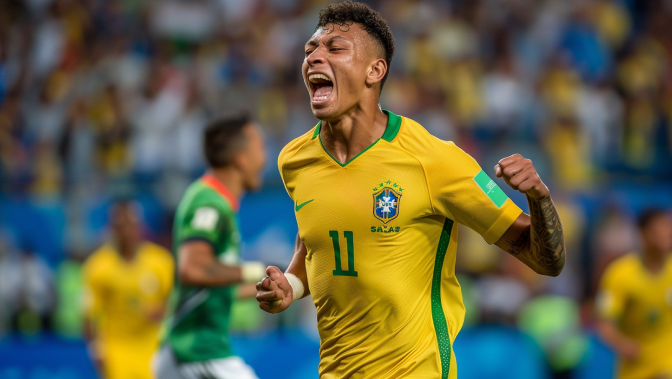
In December 2013, FIFA announced that India would be hosting its Under-17 World Cup.
In Indian football history, hosting the FIFA Under-17 World Cup in 2017 marked a turning point. India hosted a FIFA competition for the first time, demonstrating the nation’s increasing prominence in the global football scene.
The game was seen as a turning point that may raise football’s profile in India, where cricket has long been the predominant sport. The tournament showcased the potential of football in India by bringing together young talent from all over the world.
In addition, it gave Indian players a chance to play against some of the best youth teams in the world. This was how they could obtain valuable experience. The athletes’ and the sport’s overall national growth depended heavily on this exposure.
In addition, the Under-17 World Cup stimulated the growth of infrastructure. The construction of new stadiums and the renovation of old ones to suit international standards gave India’s athletic facilities a much-needed boost.
This infrastructure can help local football leagues and players as well as lay the groundwork for future international competitions.
The tournament’s success, exemplified by attendance records, proved India’s capacity to host important athletic events and its enthusiasm for football. It also inspired a new generation of players and fans, adding to the sport’s rising appeal in India.
Indian Football Records: Players that Cannot be Missed!

As I have already mentioned, several notable players have been involved in the history of Indian football. Impressive records and remarkable achievements are some of the things that make the Indian Football Team shine!
Gostha Pal, for instance, was the first Indian captain of the national team under British control. He led the team throughout the 1920s and 1930s, including a 1924 tour of Sri Lanka with a mix of Indian and British players.
In her first post-Independence game, Sarangapani Raman scored the country’s first goal against France, even though the Indians lost 2-1.
Soon after, in the 1950s and 1960s, players such as Pradip Kumar Banerjee, Neville D’Souza, and Peter Thangaraj rose to prominence. Later, Bhaichung Bhutia and IM Vijayan became a successful striking duo in the 1990s.
Today, captain Sunil Chhetri and goalkeeper Gurpreet Singh Sandhu continue to make Indian football proud by demonstrating the team’s developing potential.
These are just some of the major names that cannot go unnoticed. Here is a look at the major records by the Indian footballers:
Goalkeepers With Most Clean Sheets
| Player | Clean sheets |
| Gurpreet Singh Sandhu | 24 (still active) |
| Subrata Paul | 18 |
| Peter Thangaraj | 15 |
| Atanu Bhattacharya | 10 |
| Hemanta Dora | 9 |
| Bhaskar Ganguly | 8 |
| Kuppuswami Sampath | 6 |
| Virendra Singh | 5 |
| C Mustapha | 5 |
| Brahmanand Shankhwalkar | 5 |
Highest Scorers
| Player | Goals |
| Sunil Chhetri | 92 (still active) |
| Bhaichung Bhutia | 42 |
| IM Vijayan | 39 |
| Shabbir Ali | 30 |
| PK Banerjee | 26 |
| Jeje Lalpekhlua | 23 |
| Magan Singh | 20 |
| Inder Singh | 15 |
| Chuni Goswami | 14 |
| Neville D’Souza | 13 |
Most Hat-Tricks
| Player | Hat-tricks |
| Sunil Chhetri | 4 (still active) |
| K Appalaraju | 2 |
| R Lumsden | 1 |
| Sheoo Mewalal | 1 |
| Neville D’Souza | 1 |
| Puran Bahadur Thapa | 1 |
| Marto Gracias | 1 |
| Subhash Bhowmick | 1 |
| Magan Singh Rajvi | 1 |
| Shabbir Ali | 1 |
| IM Vijayan | 1 |
Reaching the GoalPost!
“The capacity crowd of over 1 lakh booed us and did not even pay respect to our national anthem. When the ball came in our half, such was the din that the referee’s whistle was not audible. When we attacked there was pin-drop silence.”
— Jarnail Singh
From P.K. Banerjee and Chuni Goswami to Baichung Bhutia and Sunil Chhetri, the scene of Indian Football has transformed yet remains somewhat similar.
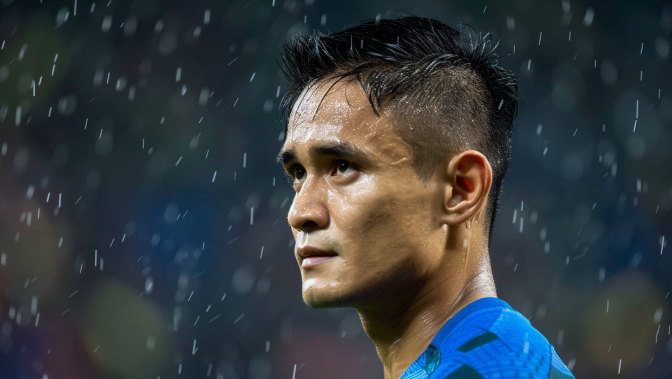
India has also won two of the three Intercontinental Cups since the tournament started. They beat Kenya in the inaugural final in 2018 and then dispatched Lebanon in 2023.
The sport was initially started as a fight for independence. Whether participating at the Olympics or hosting the U17 World Cup, the Indian Football scene has come a long way from its origins.
However, even though the team has world-class players, Chhetri being the world’s third-highest active international goal scorer after Cristiano Ronaldo and Lionel Messi, there are a few obstacles that the team would need to work on to break into the world scenario.
To summarize, growth in Indian football requires a coordinated effort to enhance infrastructure, training, refereeing standards, and governance. Furthermore, improving the sport’s prominence and offering better growth pathways for players are important steps toward overcoming the current stalemate.

